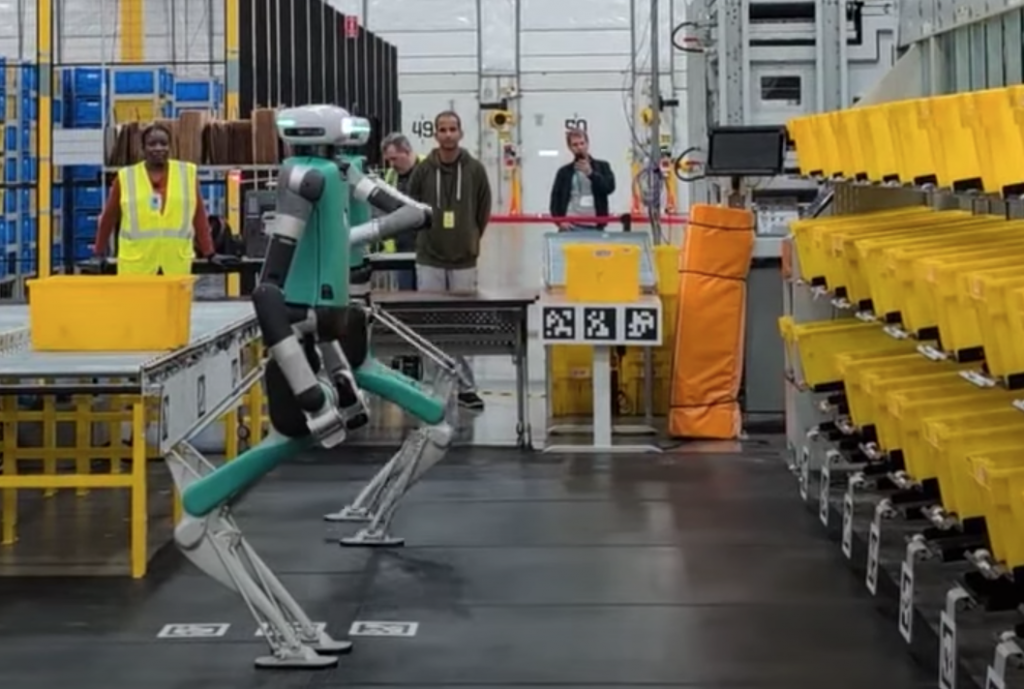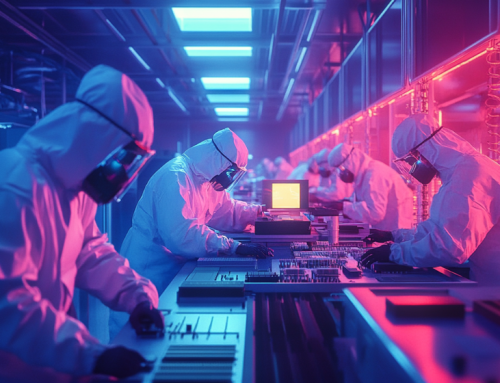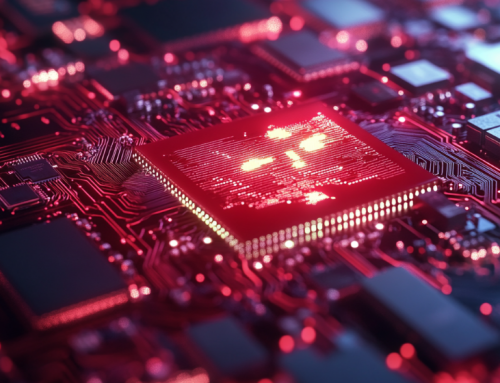
A pair of Digits, bipedal robots that can grasp, work side by side at an Amazon facility. But unions are concerned about them safely working next to humans and taking jobs. (Source: bbc.com video)
Amazon Introduces ‘Digit’ Robot in Trial to Work Beside Humans at Warehouses
Whether you are an Amazon warehouse employee in Great Britain or the United States, there may have been a ripple of anxiety across those workers on either side of the Atlantic.
The reason is Digit, the latest robot to be tried out by Amazon to work in its warehouses. Digit is different from the other robotic systems Amazon employs. It has arms and legs and can grasp packages. Amazon said the move was about “freeing employees up to better deliver for our customers.” The announcement of Digit reignited the argument of workers being displaced. Or as one comment was reported by bbc.com:
A union said Amazon had “been treating their workers like robots for years”. “Amazon’s automation is [a] head-first race to job losses. We’ve already seen hundreds of jobs disappear to it in fulfillment centers,” said Stuart Richards, an organizer at the UK trade union GMB.
Have a look below at a bbc.com video of Digit in action.
Legs Not Wheels
At first glance, Digit was built to be less of a robot and more like a human in its movements. While Amazon points to the hundreds of thousands of jobs it has created, it also says it already uses 750,000 less capable robots.
From theguardian.com., we found this description of the robot in its trial stages:
“Digit was developed by Agility Robotics, a startup based in Corvallis, Oregon, and backed by Amazon. The robot, which can walk forwards, backwards, and sideways, and can crouch – is 5ft 9in (175cm) tall and weighs 143lb (65kg). It can carry up to 35lb (16kg).
Amazon said in a blog post that it plans to put Digit to work in warehouses, using it “in novel ways.”
“We believe that there is a big opportunity to scale a mobile manipulator solution, such as Digit, which can work collaboratively with employees. Our initial use for this technology will be to help employees with tote recycling, a highly repetitive process of picking up and moving empty totes once inventory has been completely picked out of them.”
Unions Are Worried
Scott Dresser with Amazon Robotics suggested that fears over human jobs being replaced didn’t match what had happened at Amazon.
“Our experience has been these new technologies actually create jobs, they allow us to grow and expand. And we’ve seen multiple examples of this through the robots that we have today.
“They don’t always run unfortunately and we need people to repair them,” he said.
Amazon promises that robots will never replace all the workers it takes to run its massive and financially successful operations. The unions in either country aren’t willing to bet their worker’s future on Amazon’s promise.
Tye Brady, the chief technologist at Amazon Robotics, claimed that it will create new jobs, although some jobs will become redundant:
“When we do our job really, really well, our robotic systems just kind of blend into the background to become ubiquitous. You don’t talk about your dishwasher too much in your kitchen. It’s an amazing robot. It’s such a great robot that I don’t even call it a robot.”
Amazon also announced a new robotic system called Sequoia to speed up deliveries at one of its Houston warehouses. The system is designed to help identify and store inventory 75% more quickly, it said, and reduce the processing time of orders by as much as 25%.
Some might look into learning how to repair robots as a future career. Amazon says they will need people for that.
read more at bbc.com
also read theguardian.com







Leave A Comment